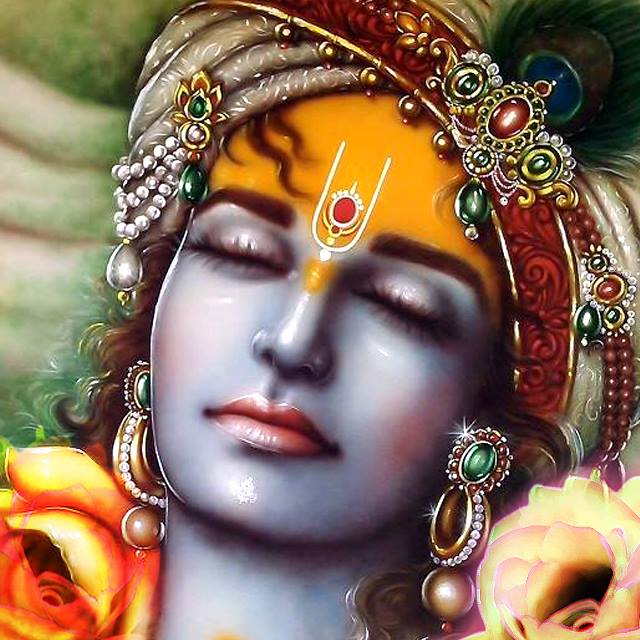Sri Krishna is the only human guru and incarnation of Vishnu called Yogavatara or the Avatar of Yoga, and Yogeshvara or the Lord of Yoga. The Bhagavad Gita remains the most important and foundational Yoga Shastra or definitive Yoga text. To understand Yoga one must understand Sri Krishna, his life, teachings and the Bhagavad Gita. Otherwise one has only touched the surface of the profound yogic science of consciousness.
By
The Gita is the essence of the Upanishads, which in turn are the essence of the Vedas. As such, the Gita is the key teaching of the Vedic Sanatana Dharma. It remains the most accessible Vedic text both in language and context. Sri Krishna is the ultimate Yoga guru as the master of all the Yoga branches and the great teacher of Vedic knowledge on all levels.
The Yoga Sutras a greater systematization than the Gita but less detail and comprehensiveness overall. This is only natural as a short sutra work it has fewer words than the verse-based Gita. Yet Rishi Patanjali as a Naga is identified with Shesh Nag, the cosmic serpent energy on which Lord Vishnu reclines during the period of cosmic dissolution.
In Kashmir, Sri Krishna is sometimes identified with Lord Shiva who is the great Lord of Yoga and Adi Guru of Yoga among the many Shaivite traditions of Pashupata, Nath, Siddha and Hatha Yogas, showing the universality of Krishna as the supreme Yoga guru.
Other Yoga Shastras and Yoga Upanishads may provide more information on specific practices, but all rest upon the Gita for their inspiration. While Adi Shankara criticized Yoga and Samkhya for their idea of Purushas as many, he never criticizes the Yoga of the Gita in his commentary on the text. Great Yogis of modern Indian from Vivekananda to Aurobindo, Ramana Maharshi, Yogananda and Chinmayananda emphasized the Gita as the basis of Yoga.
Sri Krishna’s All-Encompassing Yoga
In the process of teaching Arjuna, Sri Krishna explains the whole of Yoga at an integral level. He teaches Jnana Yoga and Vedanta, the Yoga of knowledge, as the realization of the Atman or Supreme Self beyond all name and form. He explains the Bhakti Yoga or the Yoga of action as surrender to him as the Divine ruler, Ishvara within the heart. He emphasizes Karma Yoga as the path of action following one’s dharma in life, with all we do as an offering to the Divine within. Krishna in the Gita addresses all aspects of Yoga including pranayama, pratyahara, dharana, meditation and samadhi, with an emphasis on Jnana and Bhakti, not on specific techniques. He mentions asana but only as a seated posture for meditation.
Sri Krishna was a Kshatriya and states that he taught Yoga originally to Vivasvan, the solar deity, to Manu and then to Ikshvaku who founded the solar dynasty of kings, Surya Vamsha, which passed on a line of Yoga to its great kings and emperors including Sri Ram. Krishna’s Yoga reflects this Kshatriya basis in his teachings to Arjuna whose Karma Yoga was to fight in the Kurukshetra battle. The connection of Krishna’s Yoga with a Kshatriya discipline also suggests the martial arts that we find in both Hindu and Buddhist monastic traditions, including in Hatha Yoga. That is also why the Gita became the main book for India’s Independence Movement against British colonial rule. Yet Krishna’s many-sided Yoga addresses all aspects of human life, extending to the cosmic existence, which he reveals in his universal form (Vishvarupa).
Besides formal Yoga teachings, Krishna explains the three gunas of sattva, rajas and tamas in great detail, and provides many keys for controlling the mind, mastering emotions, working with and transcending karma. As such, the Gita teaches us how to manage our lives on all levels, including how to act in the most challenging circumstances.
The Gita is also the ultimate book of dharma, as it starts out with Dharma Kshetra Kurukshetra. Yoga is the ultimate Moksha Dharma among the Purusharthas or human dharmas. The Gita teaches us how to discover and follow our dharma, which is not a dogma or dictate, but a way of consciously addressing the challenges of life as is best possible. Dharma is not a set of laws or principles but a way of awareness and responsible action, a many sided Karma Yoga.
If we examine the life of Krishna we see that he was able to manifest the highest awareness during all phases of life and all levels of action, including his role on the world stage as a king and diplomat. Sri Aurobindo noted that owing to his inner awareness a yogi can do anything better than a non-yogi. He also taught that life is Yoga. Sri Krishna is the manifestation of all life as Yoga and shows us how to conduct ourselves with the consummate awareness making everything we do a Divine Lila, taking us to the highest bliss.
Jai Sri Krishna!
This article first appeared in www.vedanet.com and it belongs to them.








